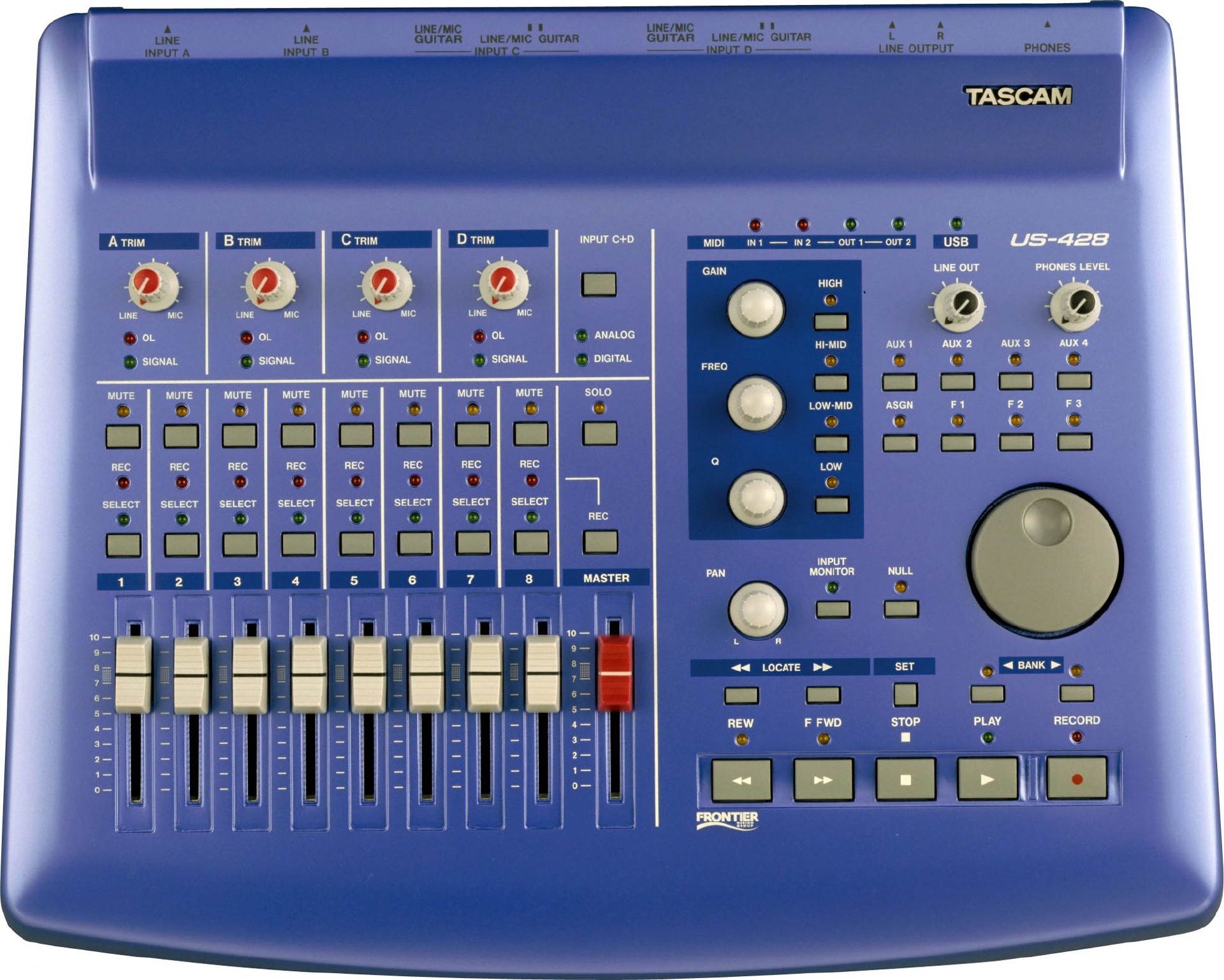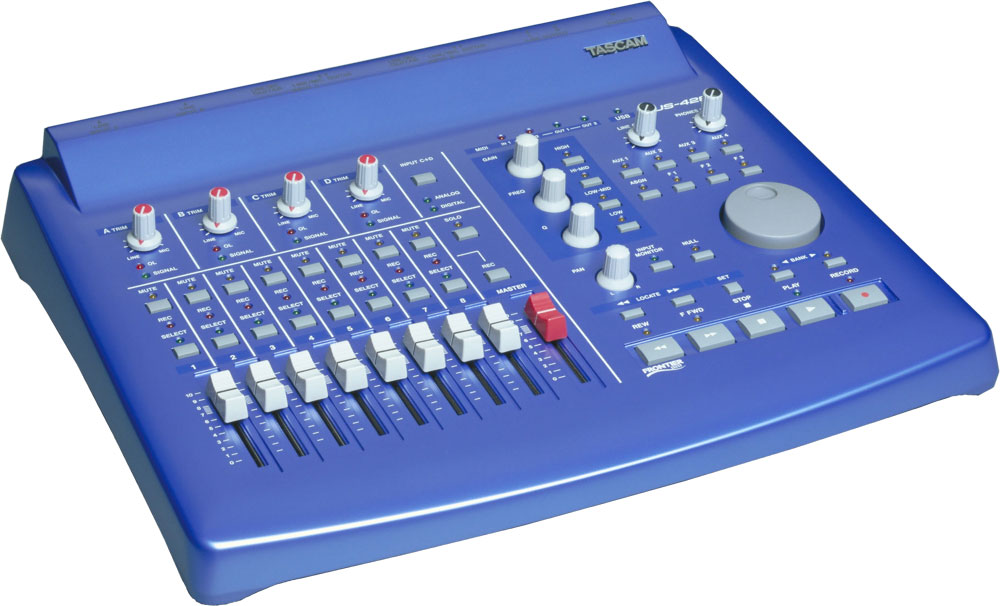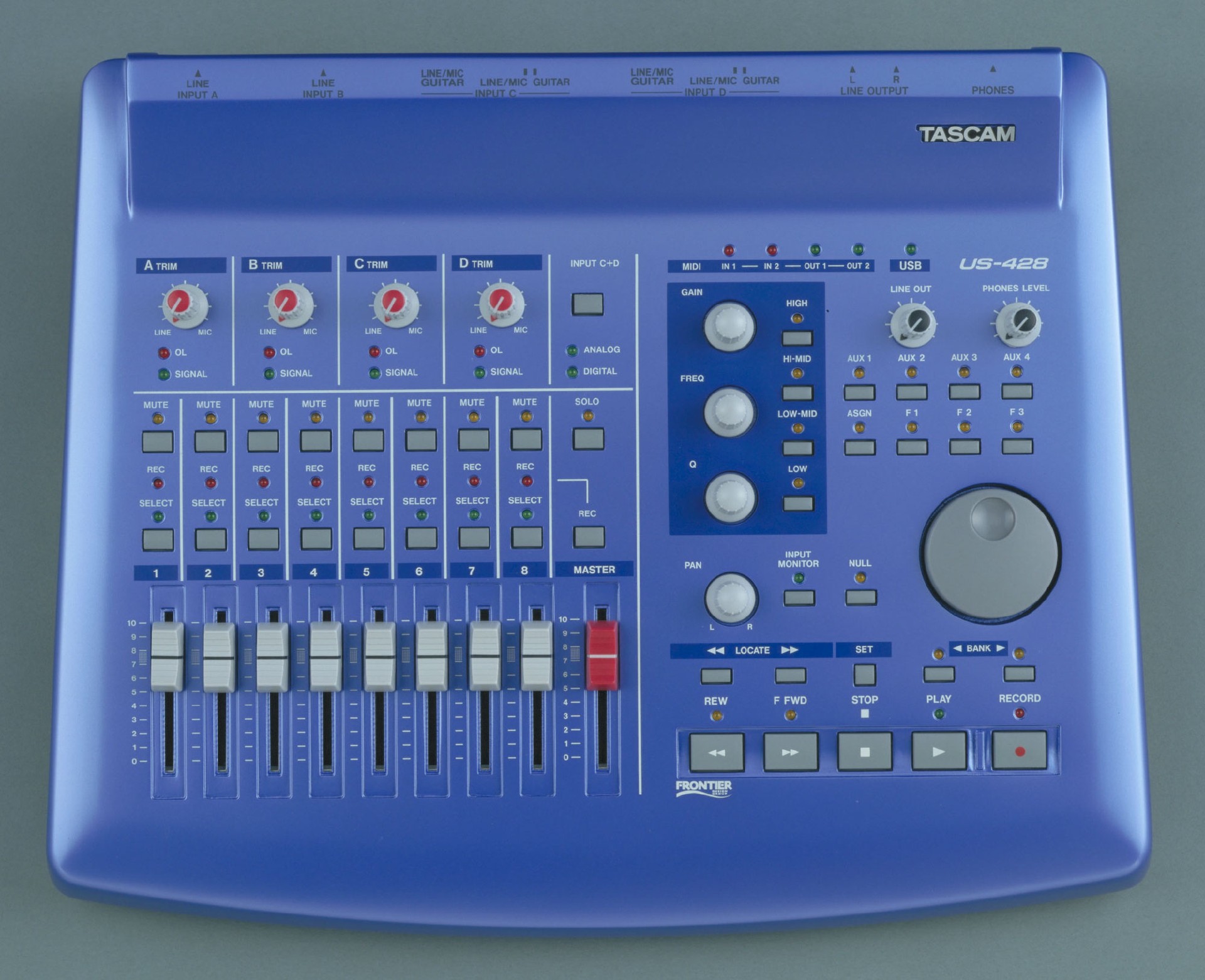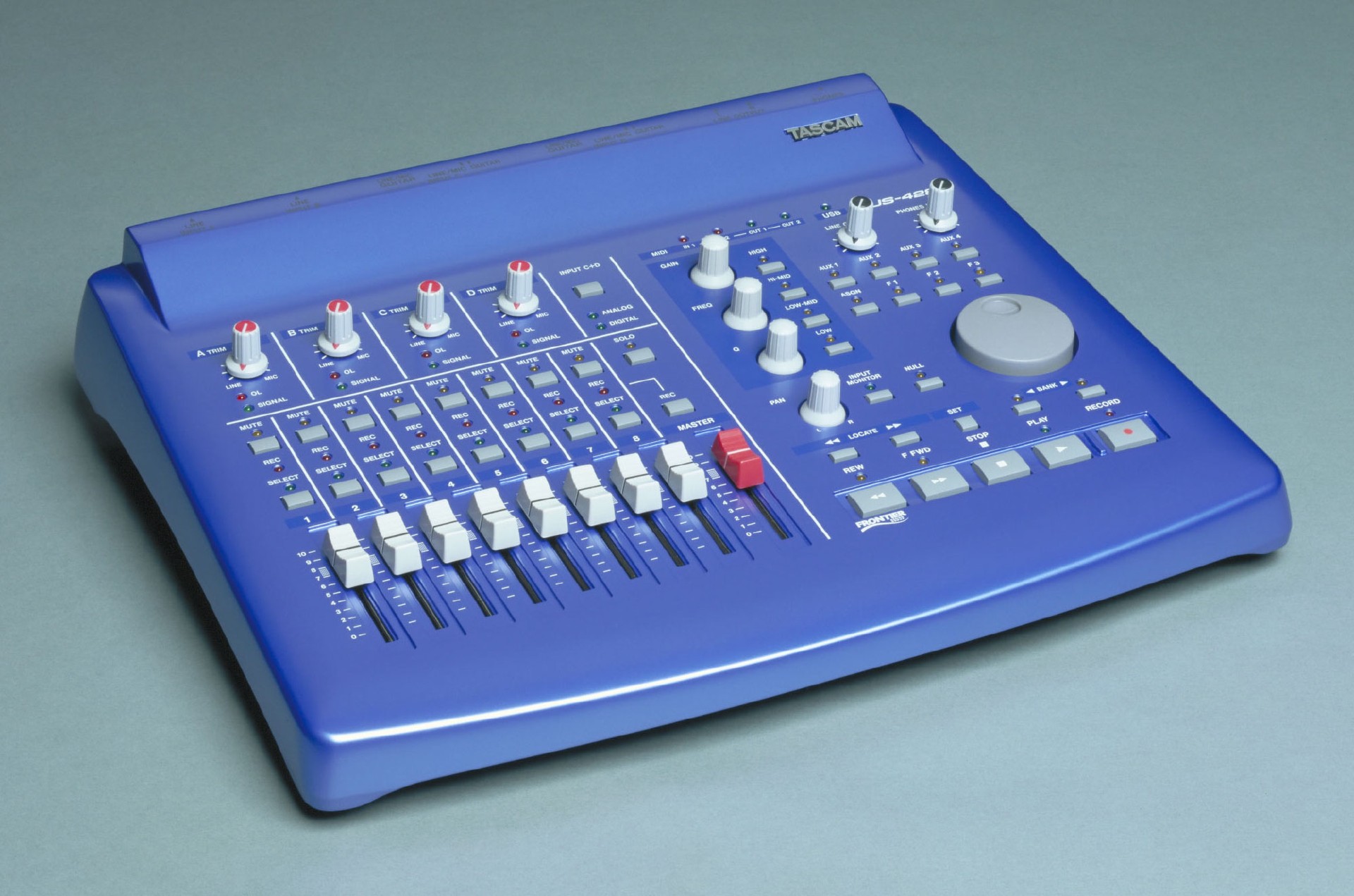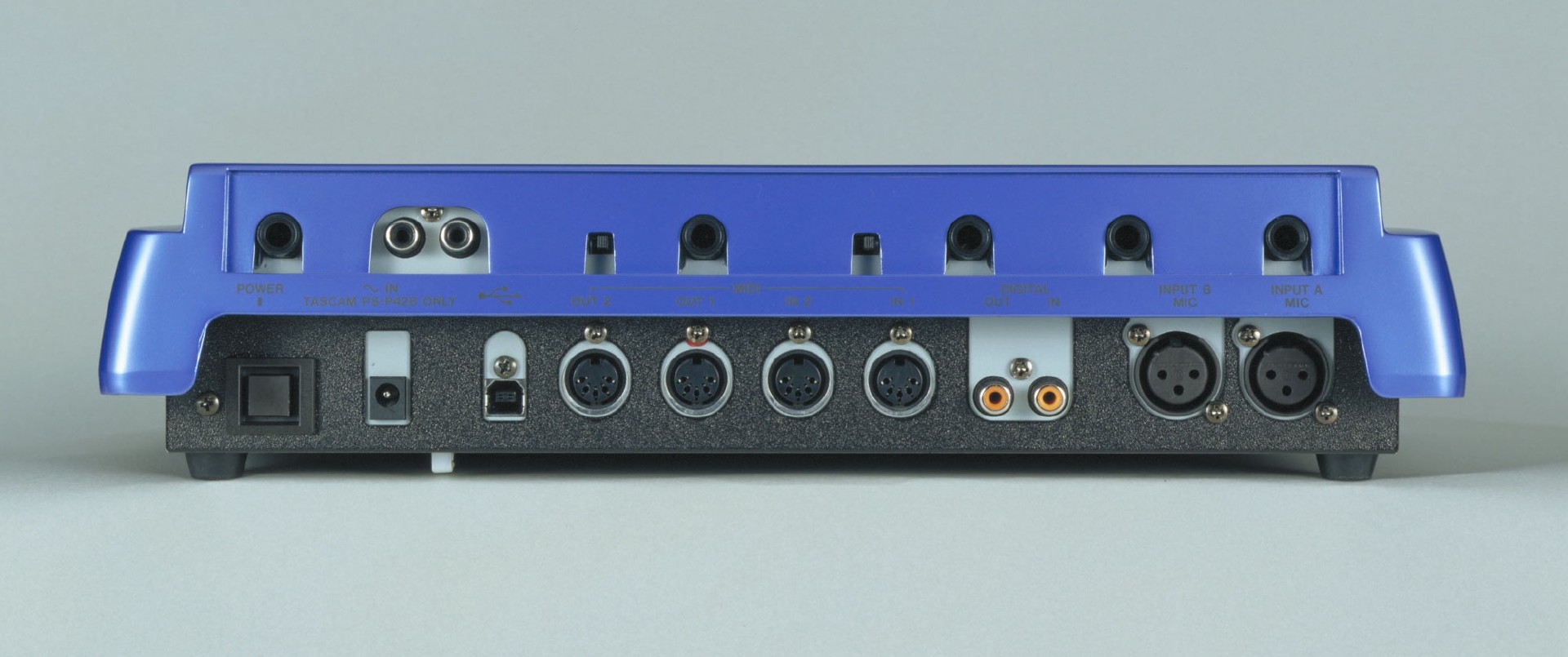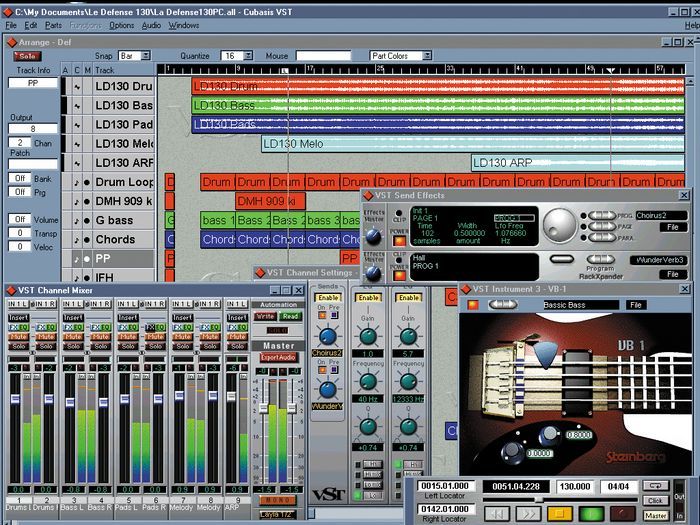
This model has been discontinued.
TASCAM and Frontier Design Group have partnered together to create the first major innovation in USB-based audio. Start with a fully 24-bit front end, with two XLR inputs, two balanced 1/4" TRS inputs, two unbalanced 1/4" inputs (switchable to Hi-Z), and S/PDIF I/O. Four channels of audio in and two out simultaneously via USB. No opening your computer, no sound card to install - it's USB, so you can even hot-plug it.
You'll spend a lot less time mousing your mix with the US-428. It's got real tactile controls for the most-used functions in your DAW applications. Transport, mute/solo and locate keys, unlimited banks of eight faders, an EQ module that supports control of up to four bands of fully parametric EQ, plus four aux sends and a panpot. It's even got 32 channels of MIDI I/O. Use one for your keys and modules, and the other for MTC, to lock your MTC-capable tape tracks to your computer.
The US-428 comes bundled with a custom version of Steinberg's Cubasis VST audio recording/MIDI sequencing software. The PC version is available with US-428s shipping now, while the Mac version will be available soon and will be shipped to previous purchasers of the US-428 free of charge.
Spec description
- PC or Mac Compatible via USB interface
- 24 bit D/A and A/D converters
- Four in (analog or S/PDIF) and two out simultaneously
- Records at up to 48kHz, 24-bit resolution
- Two independent MIDI I/O
- Supports unlimited banks of eight faders
- Dedicated EQ, Aux and Pan controllers
- Includes Cubase LE 48-track / 96kHz recording software
- Includes GigaStudio 3 LE 64-voice sampling software
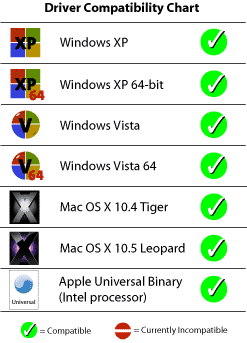
Manuals
| US-428 Installation and Use Mac Optimization Guide OS9 | 07-17-2007 | 36.8 KB |
|---|---|---|
| US-428 Installation and Use Windows 2000:XP Optimization Guide | 07-17-2007 | 714.4 KB |
| US-428 Application-Specific Documentation Using the US-428 with Nuendo | 07-17-2007 | 37.9 KB |
| US-428 Installation and Use Installation and Troubleshooting on Windows | 07-17-2007 | 189.2 KB |
| US-428 Owner's Manual | 07-17-2007 | 1.3 MB |
| A Beginner's Guide to Recording | 07-15-2007 | 2.6 MB |
Documents
Software
| US-428 Installation and Use Clean Uninstall on Windows 98 SE:ME | 07-17-2007 | 38.6 KB |
|---|---|---|
| US-428 Installation and Use Setting Up OMS on OS9 | 07-17-2007 | 47.0 KB |
| US-428 Installation and Use 'Four Control Banks' mode | 07-17-2007 | 44.7 KB |
Windows Drivers
Mac Drivers
Catalogs
| TASCAM System Design Guide for Audio Installation, 2025 | 01-17-2025 | 9.3 MB |
|---|
FAQs
Please be aware that this activation system is designed and controlled by Steinberg and not TASCAM.
- Install Cubase LE 4 or Cubase LE 5
- Make sure that your computer has a working Internet connection. This connection is necessary to activate the license because the eLicenser Control Center (eLCC) needs to register with our license server.
- Make sure that you have the latest version of the eLCC installed. Click here to download
- Open the eLicense Control Center (eLCC) software and make a note of your Soft-eLicenser number
- Create a user account in the MySteinberg area. If you already have one, please go to step 7.
- The "My Steinberg" area can be found on the Steinberg home page
- Check your email and activate your user account by clicking the link in the confirmation email
- Log in to your MySteinberg account, and click on "Activation & Reactivation", choose "Cubase LE 4" or "Cubase LE 5" and select "Permanent Activation". Enter your Soft-eLicenser and choose your hardware manufacturer
- You will receive an email containing the activation code
- Launch the eLicenser Control Center software. Click the "Enter Activation Code" button to download the license for your Steinberg product to the Soft-eLicenser. To do this, enter the required activation code into the corresponding field. Follow the instructions on screen.
The process above is taken directly from the Steinberg website. Cubase LE4 Cubase LE5
If you are still having problems after following the above instructions, consider posting a message on the Cubase.Net forum


